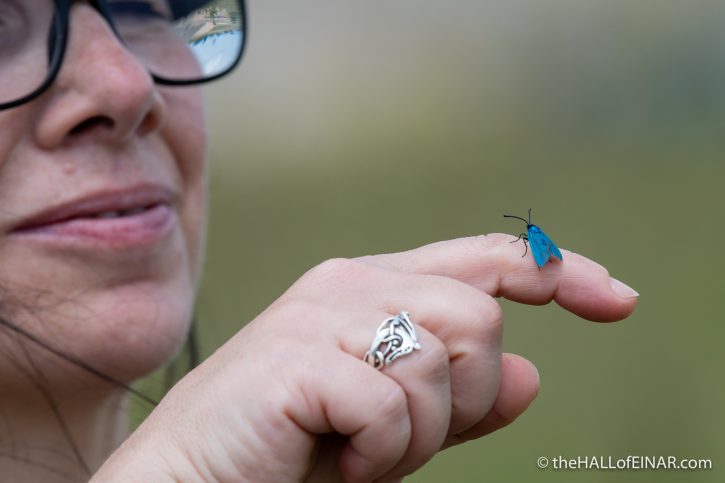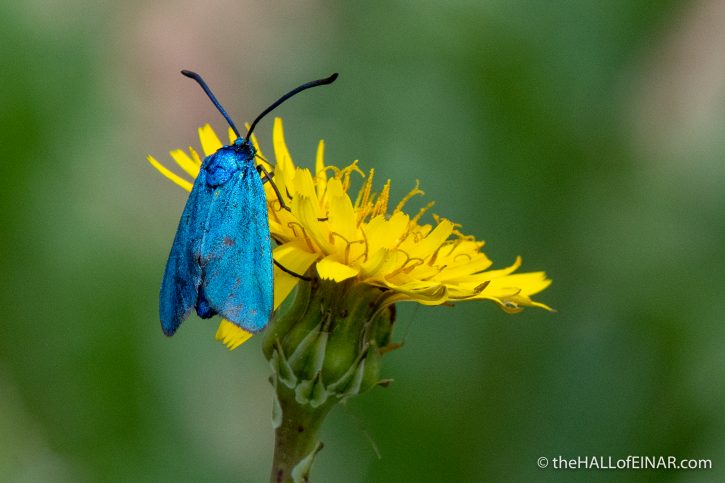Forester
There’s a bright blue iridescent moth flying in the middle of the day in the south of Italy. I have no idea what it is. It’s quite small, very intensely coloured, and jewel-like. Isn’t it beautiful?

They look like the shape of Burnet moths to me, so back home I search for ‘iridescent blue burnet moth’ and find it might be The Forester, Adscita statices.
“A day-flying species, the Forester is the commonest of the genus in Britain.” Okay, so there must be a few different species then. I’m also not in Britain. “It is widespread, but absent over wide areas.” I have no idea what that means. Widespread but absent over wide areas? It doesn’t get any clearer on re-reading. Maybe it means “Found all over the country but a bit patchy.”
“It flies in sunshine during June and July.” Okay, at least that’s specific enough.
“It can be separated by its larger wingspan from the similar Cistus Forester Adscita geryon, which only occurs in limestone districts where rock-rose grows.” I’m in a classic limestone district in the south of Italy, so maybe this isn’t The Forester at all. maybe it’s the Cistus Forester? Now I have to find out what a Rock Rose looks like and whether they have them here in Italy.
How many species are there, I wonder?
- The Forester Adscita statices
- Cistus Forester Adscita geryon
- Scarce Forester Jordanita globulariae
I wonder if there’s another species in Italy and whether they’re commoner there or not. Maybe it’s a Scarce Forester and not a Forester or Cistus Forester at all? Maybe the Scarce Forester isn’t scarce at all in Italy. I check the details of Scarce Forester and find the following:
“The day-flying adults are to be found in June and July, and are very similar to the other two British Forester moths, but is distinctly larger than Cistus Forester Adscita geryon and has more tapered antennae (in the male) than the blunt-ended antennae of The Forester Adscita statices.”
Distinctly larger than another species? More tapered antennae in the male? Okay, this must be a female, because males have feathery antennae, probably to scent females. It doesn’t help me that males have more tapered antennae then, since this is a female.

I’m happy that I identified it as far as the Family, but I’d still love to nail it down to the exact species.
| Kingdom: | Animalia |
| Phylum: | Arthropoda |
| Class: | Insecta |
| Order: | Lepidoptera |
| Family: | Zygaenidae |
| Genus: | Jordanita |
| Species: | J. globulariae |
Wouldn’t you?